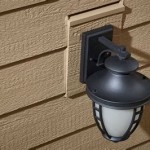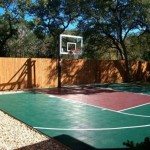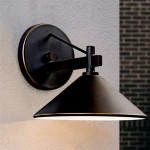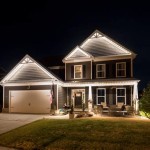How to Plan Outdoor String Lights
Outdoor string lights offer a versatile and aesthetically pleasing way to illuminate spaces, creating ambiance and extending the usability of patios, decks, gardens, and other outdoor areas. Effective planning is crucial for a successful installation that meets both functional and aesthetic requirements. This article details the essential steps in planning outdoor string lights, ensuring safety, longevity, and the desired atmosphere.
Assessing Space and Determining Lighting Needs
The first phase of planning involves a thorough assessment of the outdoor space. This includes measuring the area where the string lights will be installed and identifying potential mounting points. Consider the intended use of the space. A dining area might require brighter, more focused lighting, while a relaxation zone might benefit from softer, more diffused illumination. The existing architectural features, such as trees, fences, and building structures, will influence the layout and design.
Determine the total length of string lights required based on the measured distances and desired spacing. It is preferable to have slightly more length than needed, allowing for flexibility during installation. Also, consider the height at which the lights will be hung. Lower heights create a more intimate atmosphere, while higher heights allow for broader area coverage. Account for any dips or curves in the string, as these will require additional length.
Consider the ambient lighting conditions. If the area is already well-lit, the string lights may serve primarily as decorative elements. In darker areas, brighter lights may be necessary for functional illumination. Evaluate the existing electrical infrastructure to identify available power sources. If no suitable outlets are accessible, alternative power options like solar-powered string lights or extension cords will need to be considered.
The style of the outdoor space should also influence the choice of string lights. Vintage-style Edison bulbs complement rustic or farmhouse aesthetics, while globe lights offer a more contemporary look. The color temperature of the bulbs is another important consideration. Warm white lights (2700K-3000K) create a cozy and inviting atmosphere, while cooler white lights (4000K-5000K) provide brighter, more functional illumination.
Documenting the layout is helpful. Create a simple sketch of the space, noting the dimensions, existing features, potential mounting points, and the desired path of the string lights. This visual representation will aid in accurate material estimation and installation planning. Consider potential obstructions such as tree branches or overhanging structures that might interfere with the string lights.
Selecting Appropriate String Lights and Hardware
Choosing the right type of string lights is critical for achieving the desired aesthetic and ensuring durability. String lights are available in a variety of bulb types, including incandescent, LED, and solar-powered. LED string lights are generally preferred due to their energy efficiency, longer lifespan, and lower heat output. Incandescent bulbs produce a warmer light but consume more energy and require more frequent replacement.
Consider the bulb shape and size. Globe lights, Edison bulbs, and fairy lights are popular choices. Globe lights are round and provide a soft, diffused light. Edison bulbs have a vintage aesthetic with visible filaments. Fairy lights are small and delicate, ideal for creating a subtle, twinkling effect. The spacing between the bulbs also affects the overall appearance. Closer spacing creates a more continuous line of light, while wider spacing provides a more punctuated effect.
Evaluate the quality and durability of the string lights. Look for lights that are specifically designed for outdoor use and are rated for wet locations. The string itself should be made of a durable material that can withstand exposure to the elements. Check the gauge of the wire; a thicker gauge indicates a more robust and durable product. Also, consider the socket material. Plastic sockets are less expensive but may be more prone to cracking or damage in extreme temperatures.
The selection of appropriate hardware is just as important as the string lights themselves. Mounting hardware should be sturdy and weather-resistant. Common options include hooks, eye screws, wire, and zip ties. Hooks and eye screws can be screwed into trees, fences, or building structures. Wire can be used to create a suspension system between mounting points. Zip ties are useful for securing the string lights to existing structures.
Consider the weight of the string lights when selecting mounting hardware. Heavier lights require sturdier hardware to prevent sagging or breakage. Use multiple mounting points to distribute the weight evenly. For longer spans, consider using a guide wire to provide additional support. The guide wire should be made of a strong, rust-resistant material such as stainless steel. Ensure that all hardware is compatible with the chosen string lights and is suitable for outdoor use.
Safety is paramount when selecting hardware. Use insulated hooks or carabiners to prevent electrical shocks. Avoid using nails or staples to secure the string lights, as these can damage the wiring. Choose hardware that is appropriate for the surface it will be attached to. For example, use concrete screws for masonry surfaces and wood screws for wooden structures. Always follow the manufacturer's instructions for installation to ensure safety and prevent damage.
Installing String Lights Safely and Effectively
Prior to installation, it is essential to plan the layout and ensure that all necessary materials are readily available. This includes the string lights, mounting hardware, a ladder, a drill (if necessary), and any other tools required for the specific installation. It is also crucial to disconnect the power source before commencing any electrical work to prevent shocks.
Begin by installing the mounting hardware at the designated points. If drilling is required, use the appropriate size drill bit and ensure that the screws are securely fastened. For trees, consider using tree-friendly straps to avoid damaging the bark. Avoid overtightening the straps, as this can restrict the tree's growth. Space the mounting points according to the manufacturer's recommendations to prevent excessive sagging of the string lights.
Attach the string lights to the mounting hardware, starting at one end and working your way to the other. Use hooks, zip ties, or wire to secure the string lights to the mounting points. Ensure that the lights are evenly spaced and that there is no excessive tension on the string. Check for any potential hazards, such as sharp edges or protruding objects that could damage the wiring.
For longer spans, use a guide wire to provide additional support. Attach the guide wire to the mounting points first, then secure the string lights to the guide wire. This will help to prevent sagging and ensure that the lights remain evenly spaced. Adjust the tension of the guide wire as needed to achieve the desired appearance.
Pay attention to the placement of the electrical cord. Ensure that the cord is not stretched or kinked and that it is safely routed to the power source. Use outdoor-rated extension cords if necessary. Avoid running the cord across walkways or areas where it could be a tripping hazard. Secure the cord to the ground or to a nearby structure using cable staples or zip ties.
Once the installation is complete, carefully inspect the string lights to ensure that all connections are secure and that there are no exposed wires. Plug in the lights and test them to ensure that they are functioning properly. If any bulbs are not working, replace them immediately. Double-check all mounting points to ensure that the lights are securely attached and that there is no risk of them falling.
Regular maintenance is essential for prolonging the lifespan of outdoor string lights. Periodically inspect the lights for damage or wear and tear. Replace any damaged bulbs or wires immediately. Clean the lights regularly to remove dirt and debris. In harsh weather conditions, consider removing the lights and storing them indoors to protect them from the elements.

How To Hang Patio Lights

28 Backyard Lighting Ideas How To Hang Outdoor String Lights

Make Your Outdoor Space More Inviting With String Lights The Seattle Times

How To Hang Patio Lights

Diy Patio Arbor Using String Lights The Honeycomb Home

5 Tips On How To Hang Outdoor String Lights

How To Hang Outdoor String Lights A Step By Guide Govee

Diy Outdoor Patio String Lights Landscape Lighting Guru

A Canopy Of String Lights In Our Backyard Gray House Studio

How To Hang String Lights 10 Diffe Ways Jessica Welling Interiors
Related Posts







